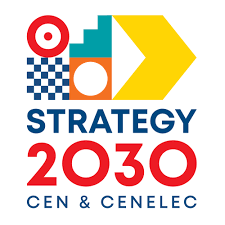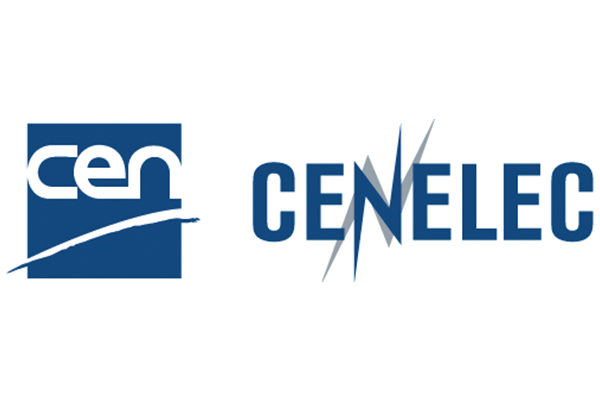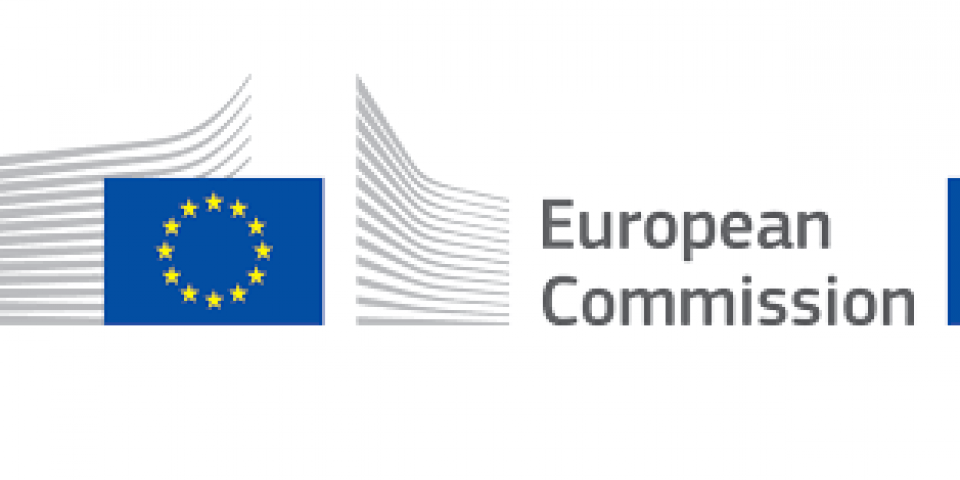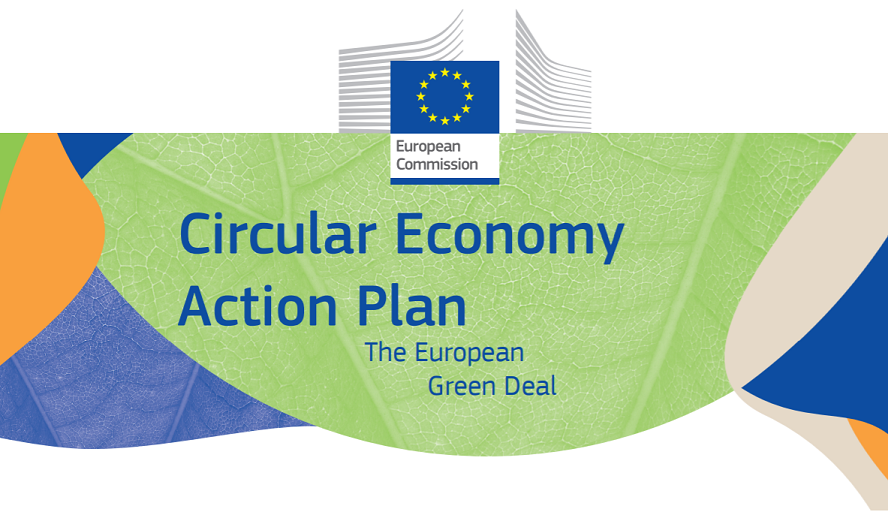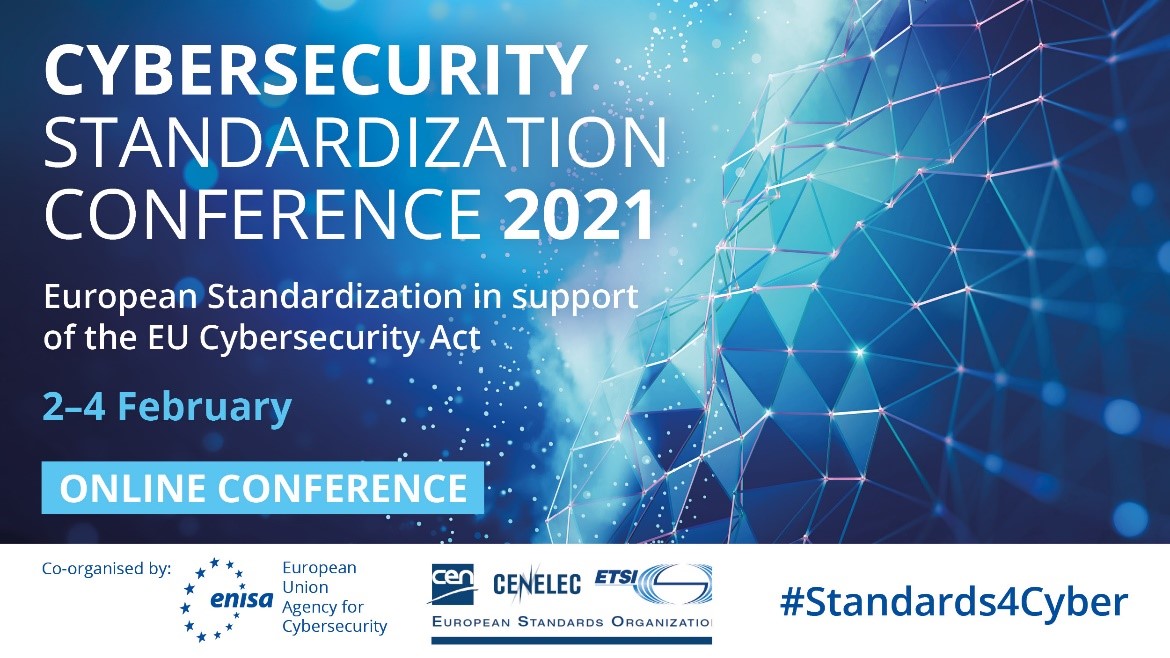Our world is changing faster than ever, driven by environmental and geopolitical changes and technological innovation. Such structural trends raise a variety of challenges across different regions and industries, and make for an unpredictable, at times even turbulent, market environment. However, these rapid changes also offer opportunities for growth and innovation. Through the new Strategy, the CEN and CENELEC community aims at “Building a safer, more sustainable and competitive Europe through European and International Standardization”. To achieve this, the organisations state as their mission: “through our stakeholders’ networks, we create consensus-based standards in order to generate trust, fulfil market requirements, enable market access and innovations for a better, safer and more sustainable Europe”.
The Strategy 2030 establishes a series of five goals that will guide CEN and CENELEC’s actions in the next decade:
- EU and EFTA recognize and use the strategic value of the European standardization system
- Our customers and stakeholders benefit from state-of-the-art digital solutions
- Increase the use and awareness of CEN and CENELEC deliverables
- The CEN and CENELEC system to be the preferred choice for standardization in Europe
- Strengthen our leadership and ambition at the international level
As a strategic framework for CEN, CENELEC and their respective members, the Strategy 2030 will provide a frame of reference to ensure complementarity, coherence and consistency across the strategic exercises and long-term objectives of all actors in the CEN and CENELEC community.
ETSI is pleased to unveil ETSI TS 119 182-1, a specification for digital signatures supported by PKI and public key certificates which authenticates the origin of transactions ensuring that the originator can be held accountable and access to sensitive resources can be controlled. This standard is a major achievement for interoperability of digital signatures for a range of applications in today's digital economy including the banking and financial world where so far, some 4,000 banks were using various signing algorithms for their APIs to secure their online transactions. Called JAdES, ETSI TS 119 182-1 comes in support of secure communications fulfilling the requirements of the European Union eIDAS Regulation (No 910/2014) for advanced electronic signatures and seals and regulatory requirements for services such as open banking.
This JAdES digital signature specification is based on JSON Web Signature and contains the features already defined in the related ETSI standards for AdES (advanced electronic signature/seal) applied to other data formats including XML, PDF and binary. The standard was developed with contributions from a number of stakeholders including representatives from the banking sector who, through Open Banking Europe, have brought their operational requirements to align European APIs onto one security model. ETSI TS 119 182-1 can be used for any transaction between an individual and a company, between two companies, between an individual and a governmental body, etc. applicable to any electronic communications.
Climate change impacts are already affecting ecological and socio-economic systems, and it is anticipated that these impacts will continue well into the future. A recently published standard, EN ISO 14091:2021 ‘Adaptation to climate change - Guidelines on vulnerability, impacts and risk assessment (ISO 14091:2021)’ offers organisations a consistent, structured and pragmatic approach to understanding their vulnerabilities and to preventing or mitigating negative consequences caused by climate change, while taking advantage of opportunities.
Preparing, implementing and reporting a climate change risk assessment: EN ISO 14091:2021 supports organisations in the use of systematic and replicable risk assessment tools, allowing for qualitative and quantitative analysis. It describes how to understand vulnerability and how to develop and implement a sound risk assessment and is applicable to organisations of all types and sizes, whether doing so for the first time or conducting advanced risk assessments. The standard offers guidance on the use of different approaches, namely screening assessments and impact chains. It covers the different steps required for a solid climate risk assessment, including the preparation, implementation and reporting of such an assessment. Further details are provided regarding the use of indicators, data management and assessment of adaptive capacity.
ETSI announced a new specification, ETSI TS 103 523-2: Transport Layer MSP (TLMSP), Part 2 of the Middlebox Security Protocol (MSP) series, which defines a protocol for varied (fine-grained) access control to communications traffic. This specification was developed by the ETSI Technical Committee CYBER. Middleboxes are vital in modern networks - from new 5G deployments, with ever-faster networks that need performance management, to resisting new cyberattacks with evolved threat defence that copes with encrypted traffic, to VPN provision. Network operators, service providers, users, enterprises, and small businesses require being granted varied (fine grained) permissions.
As more datagram network traffic is encrypted, the problems for cyber defence will grow. This intrusive "break-and-inspect" method, ignoring the desire for explicit authorization by endpoints, raises questions around security, privacy, and trust. ETSI TS 103 523-2, MSP Part 2 addresses this gap by specifying a protocol that allows fine-grained access and nuanced permissions for different portions of traffic, allowing middleboxes to perform their functions securely whilst keeping up with the rapid pace of technical development.
Standards, lifting the Single Market up!
The new versions of two of the most important European standards for lifts (EN 81-20:2020 and EN 81-50:2020) have just been published in the Official Journal of the EU, ensuring their harmonisation under the Lifts Directive. This can be the opportunity to explore more in detail the surprising and very important role of standards for lifts and elevators in the EU and on the global market.
European Standards for lifts and escalators: a Single Market Success story : In 1962, the European Committee for Standardization (CEN) established CEN/TC 10 on ‘Lifts, escalators and moving walks’ with the aim of agreeing on safety rules for the construction and installation of lifts, escalators, and passenger conveyors in the then European Community. The work of European standardization in this field has been particularly relevant in making the Single Market a reality through the adoption of Harmonised Standards. CEN successfully collaborates with the European institutions by creating the standards that implement the requirements introduced by the 'Lifts Directive 2014/33/EU' and 'Machinery Directive 2006/42/EC'. The Lifts Directive, whose latest version is applicable from 20 April 2016, harmonises the rules governing the design, manufacture, and installation of lifts. Its aim is to permit the free circulation of lifts within the EU internal market, ensuring a high level of safety for lift users as well as maintenance and inspection technicians. Similarly, the Machinery Directive harmonises the rules for escalators and other lifting appliances.
ETSI has successfully completed its international emergency communications interoperability testing event. 285 test pairings, with 87% demonstrating interoperability, were run from 22 February to 5 March 2021, both in Europe and across the Atlantic to assess the compatibility of products for mission-critical public safety services. This remote event was a cooperation between ETSI, EENA, the European Emergency Number Association and for the first time NENA, the 9-1-1 Association.
Vendors of emergency communication equipment connected to test Next Generation 112 and NG9-1-1 technologies, responding to the increasing requirements and demands of content-rich, IP-based emergency calling. Stakeholders included NGCS vendors, Forest Guide developers, user agents, mobile operators and call handling vendors. Government bodies, policy makers and local authorities also joined in to discuss implementation in their countries. Participants tested components of the emergency communication chain such as location and location-based call routing, audio, video, real-time text, policy based routing and core services based on ETSI TS 103 479, developed by the ETSI EMTEL Special Committee.
The European Commission welcomes the agreement reached by the European Parliament and the Council on the Connecting Europe Facility (CEF) proposal, as part of the next long-term EU budget 2021-2027.
The Connecting Europe Facility programme supports investment in Europe's transport, energy and digital infrastructure networks. It will support the twin green and digital transition, by contributing to the ambitious targets for the European Green Deal and the Digital Decade.
It will support the goals of the Smart and Sustainable Mobility Strategy laying the foundation for how the EU transport system can achieve its green and digital transformation and become more resilient to future crises. As outlined in the European Green Deal, the result will be a 90% cut in emissions by 2050, delivered by a smart, competitive, safe, accessible and affordable transport system. It will also prioritise environmentally friendly modes such as rail and the development of charging points for vehicles using alternative fuels.
The EU’s Circular Economy Action Plan
The European Commission released its new Circular Economy Action Plan (CEAP) in support of the European Green Deal on 11 March 2020. It fits in a preeminent list of EU strategy documents with a strong impact on standardization, such as the new Biodiversity Strategy, the Farm to Fork Strategy, the Industrial Strategy, the Chemicals Strategy for Sustainability and the Sustainable Products Initiative.
Building on the work already undertaken in the transition towards a more circular European economy, the Action Plan sets out objectives in product design, production and consumption. This new Action Plan for the Circular Economy will have impacts on most – if not all – businesses in Europe. The need for constant, systematic monitoring of upcoming legislation is now higher than it has ever been for companies to best undertake this transition without affecting their profitability.
In this context, the Circular Economy Topic Group (CE-TG) of SABE was set up to provide a faster and more coordinated response to the horizontal and cross sectorial standardization needs related to the European Circular Economy-related initiatives. The SABE CE-TG focuses on identifying and discussing strategic standardization issues and needs related to Circular Economy within CEN and CENELEC and the coordination with other standard organizations. It supports SABE in advising the CEN and CENELEC Technical Boards on standardization priorities for instance in support of the implementation of the Circular Economy Action Plan.
The European Standards Organizations, CEN, CENELEC and ETSI, joined forces with ENISA, the European Union Agency for Cybersecurity, to organize its annual conference virtually this year. The event, which took place from 2 to 4 February, attracted over 2000 participants from the EU and from around the world. The conference addressed standardization in relation to the Radio Equipment Directive (RED) and certification under the provisions of the Cybersecurity Act (CSA). The ultimate objective of the exercise is to enable an effective implementation of the Cybersecurity Act. The objectives of the presentations and key topics addressed by the conference panels were the following:
- Cybersecurity requirements and standardization activities under the scope of the Radio Equipment Directive
- Standardization supporting the Cybersecurity Act
- Developments on standardization in the area of Consumer IoT
- Standardization of 5G
The slides presented during the conference are available on the website of the Cybersecurity Standardization Conference.
The EN16803 series on GNSS makes autonomous driving safer
Autonomous driving is among the most demanding road applications. It requires high accuracy coupled to a high level of integrity. Furthermore, the environment in which it operates is much harsher than its counterparts in other domains like aviation or maritime... This combination of requirements puts autonomous guidance systems in a situation where its assessment, certification and type-approval are very complex. New methodologies are clearly needed to be able to tackle the upcoming PPP (Precise Point Positioning) or NRTK (Network Real Time Kinematic) techniques.
The WG1 'Navigation and positioning receivers for road applications' of CEN/CLC JTC5 ‘Space’, whose Secretariat is currently held by BNAE (AFNOR), has been developing a standardization framework for assessing GNSS-based positioning systems. This framework relies on the EN16803 series on the use of GNSS-based positioning for ITS and on-going projects led by the WG1.






